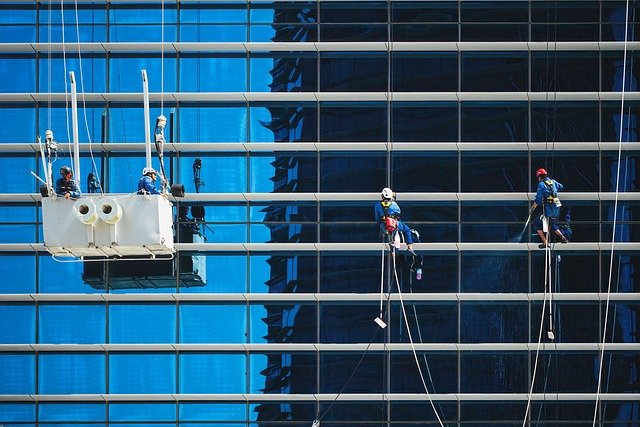Designing a compact equipment kit for exterior glass service
A compact equipment kit helps exterior glass teams work efficiently on facades and highrise buildings while addressing safety, compliance, and logistics. This article outlines essential components, selection criteria, and operational considerations—from rope access and suspension gear to inspection tools and sustainable supplies—so contractors and technicians can specify a streamlined kit that supports maintenance, reduces risk, and fits day-to-day field realities.

Facade and highrise access constraints
Exterior glass service starts with understanding the facade and highrise context. A kit must reflect building geometry, glazing types, and access points: curtain walls, recessed windows, balconies, and setback areas each change what equipment is practical. Compactness is achieved by prioritizing multi-purpose tools and collapsible items that fit in lifts or service elevators. Consider how wind exposure, building height, and nearby structures affect deployment. Matching kit contents to common facade challenges reduces setup time and helps crews maintain consistent workflow across different building types while minimizing on-site storage needs.
Safety, certification, and compliance
Safety requirements shape every equipment decision. Kits should include certified fall-arrest devices, user-friendly anchors, and inspection tags that meet local regulations and industry standards. Certification records and manuals should be part of the kit so technicians and supervisors can verify compliance during audits. Routine pre-shift checks and documented inspections are essential to maintain safety integrity. Choosing gear from reputable manufacturers with traceable test documentation reduces liability and simplifies compliance reporting when contracting for work on regulated highrise projects.
Ropeaccess and suspension equipment
For ropeaccess and suspension work, select harnesses, ropes, descenders, and backup devices that balance performance with portability. Opt for lightweight, certified harnesses with modular attachments and compact descenders that fit into a small tool pack. Use color-coded ropes and pre-cut lanyards to simplify rigging and speed inspections. Include redundancy items—small backup karabiners and a lightweight portable anchor system—so teams can adapt to varying anchor points on a facade. Prioritize gear that is easy to stow and quick to deploy to keep operations efficient on vertical surfaces.
Inspection, maintenance, and risk management
A practical kit must support inspection and ongoing maintenance of both equipment and the facade. Include concise inspection tools: a compact torque wrench, a small borescope or camera for hard-to-reach areas, inspection tags, and a checklist pad or tablet with templates for logging condition and risk observations. Routine maintenance items—spare slings, quick links, and mild cleaning agents—help teams address minor wear during a shift. Embedding a risk-management mindset into kit contents ensures wear and defects are caught early, reducing the chance of operational delays or safety incidents.
Training, contracting, and logistics
The most compact kit still depends on trained personnel and clear contracting terms. Training should cover use of suspension and ropeaccess equipment, inspection protocols, and emergency procedures. Ensure operators have relevant certifications documented in the kit or company records to meet client contracting requirements. Logistics planning influences what can reasonably be compact: transport access, elevator constraints, and on-site storage determine pack size limits. Communicate these constraints with contracting personnel so job scopes match what crews can safely and efficiently deliver with a compact kit.
Sustainability and compact equipment strategy
Sustainability considerations affect kit composition and lifecycle choices. Favor durable, repairable items and reusable consumables to reduce waste. Lightweight, long-lasting components reduce transport fuel and effort over time. Include concentrated or refillable cleaning solutions in small, sealed containers rather than single-use bottles, and choose training materials in digital form to minimize paper. A compact, sustainable kit balances upfront durability with ease of repair and replacement, supporting long-term maintenance programs without sacrificing operational efficiency.
Conclusion Designing a compact equipment kit for exterior glass service requires a practical balance among facade realities, safety and certification, ropeaccess and suspension needs, inspection and maintenance tools, training and contracting constraints, logistics, and sustainability goals. By prioritizing multi-use, certified equipment, clear inspection protocols, and streamlined logistics, contractors and technicians can assemble a portable kit that supports compliant, efficient, and lower-risk operations on a wide range of exteriors. Regular review of kit contents against job demands and regulatory changes helps keep the kit fit for purpose over time.






